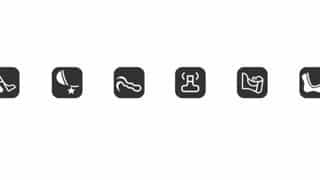In the study of alphabets and their structure, one common question that often arises is: ‘N huruf ke berapa?’ This phrase, when translated from Indonesian, means ‘What position is the letter N?’ The answer may seem simple at first glance, but exploring it in detail reveals interesting aspects about alphabetical order, linguistic applications, and how letters are used in a variety of systems, including learning, encryption, and language education. Understanding the position of each letter in the alphabet is not only essential for young learners but also for anyone interested in coding systems or puzzle-solving techniques.
Alphabetical Order: Where Does N Stand?
In the modern English alphabet, the letter N holds the 14th position. This count starts from A as number 1 and goes sequentially to Z, which is the 26th letter. Here’s a quick look at a few letters and their corresponding positions:
- A – 1
- B – 2
- C – 3
- M – 13
- N – 14
- O – 15
- Z – 26
So, N is exactly in the middle of the second half of the English alphabet. It directly follows the letter M, which is the 13th letter. Knowing the position of N can be helpful in various contexts, including classroom settings, coding languages, and alphabetical lists.
Why Knowing ‘N Huruf ke Berapa’ Matters
Understanding the alphabetical position of letters such as N may seem basic, but it serves various educational and practical purposes. Here are a few scenarios where knowing that N is the 14th letter is relevant:
- Alphabet Games: Many children’s games require the player to identify letters by their number or sequence.
- Language Learning: When studying spelling, phonetics, or reading, knowing where a letter appears can aid in memory and recognition.
- Cryptography: Encryption methods like Caesar Cipher rely on shifting letters based on their position in the alphabet.
- Crossword Puzzles and Word Games: Some games offer clues based on the order of the alphabet.
Use in the Caesar Cipher
The Caesar Cipher, one of the oldest encryption techniques, involves shifting letters by a fixed number in the alphabet. For example, if N is shifted by 3 positions forward, it becomes Q. Since N is the 14th letter, adding 3 gives us 17, which corresponds to Q in the alphabet. This form of logic is often used in basic cybersecurity education and word-based puzzle challenges.
Alphabet as a Number System
Letters are frequently converted to numbers for various applications. In this system, the letter N equals 14. This type of numerical representation is seen in:
- Spreadsheets (e.g., column labels in Microsoft Excel)
- Data encoding systems
- Mathematical problems involving characters
Knowing that ‘N huruf ke berapa’ yields the number 14 is not just trivia it can help in real-world tasks that require letter-number conversions. This approach also appears in numerology, where letters are assigned values for symbolic interpretation.
Comparative Position in Other Alphabets
While N is the 14th letter in English, the position might vary in other alphabets depending on structure and characters used. Let’s take a quick look:
- Spanish Alphabet: Traditionally includes ‘Ã’ after N, which can affect sorting or letter positions.
- Greek Alphabet: Uses different symbols altogether (e.g., Nu for N, which is the 13th letter).
- Russian Alphabet: The Cyrillic script has its own order, and ‘Ð’ (which looks like H in Latin) represents the sound of N but appears as the 15th letter.
Thus, while in English, ‘N huruf ke berapa’ gives 14, it’s important to recognize the differences across languages.
Applications in Coding and Programming
In computer science, characters like N are often converted to their ASCII values. In the ASCII system:
- Uppercase N: 78
- Lowercase n: 110
This numerical encoding enables letters to be processed by computers. Understanding both the alphabetical and digital position of N can be vital in tasks like string manipulation, data encryption, or file organization.
Example in Code
Here’s how you might use the letter N in a Python snippet:
letter = 'N'print(ord(letter)) # Output: 78This command tells you the ASCII value of ‘N’, providing further insight into its digital identity.
Mnemonic Techniques to Remember Letter Positions
One easy way to remember that N is the 14th letter is by using memory aids. For example:
- ‘M’ is the 13th letter, representing the halfway point in the 26-letter alphabet.
- ‘N’ naturally follows ‘M,’ making it 14.
- Use acronyms or phrases such as ‘Nice Number Fourteen’ to associate N with its position.
These techniques are helpful for young learners or for anyone preparing for tests that involve alphabet sequencing.
Fun Facts About the Letter N
- N is a consonant and makes a nasal sound in phonetics.
- The word ‘N’ is pronounced /Én/ in English.
- It often appears in negative words like not, never, and no.
- N is used as a variable in math and science to represent a number or count.
Understanding its position as the 14th letter helps reinforce these associations when learning vocabulary or working with symbolic logic.
So, the answer to ‘N huruf ke berapa?’ is clearly that N is the 14th letter in the English alphabet. While it may seem like a simple fact, this information has a surprising number of applications across language learning, coding, games, encryption, and memory techniques. Whether you are a student, a language enthusiast, or someone delving into computer programming, knowing the position of N and other letters can enhance your understanding of systems and improve your analytical skills.
